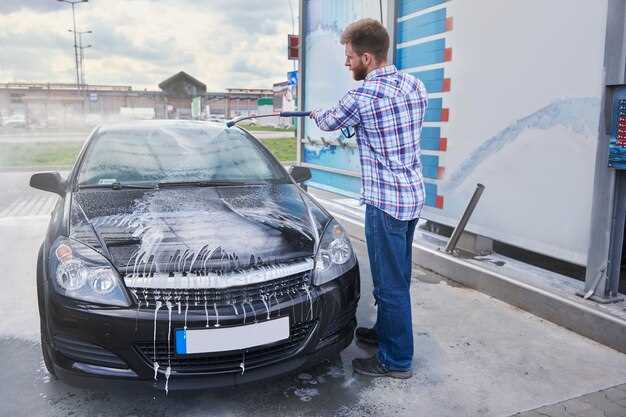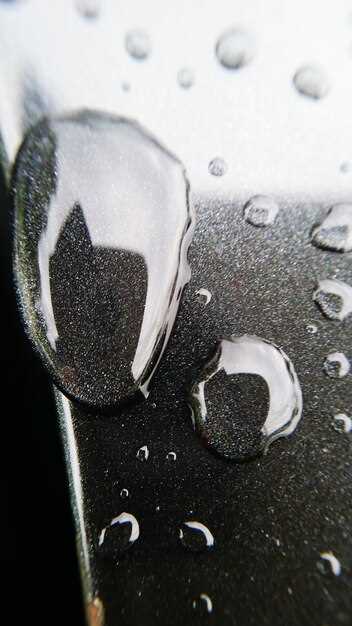
Car paint is not just an aesthetic feature; it serves as a protective layer that shields the vehicle’s surface from various environmental factors. However, the lifespan and effectiveness of this paint are heavily influenced by weather conditions. Understanding how exposure to elements such as sunlight, rain, snow, and humidity can affect your car’s paint is crucial for maintaining its appearance and extending its longevity.
Constant exposure to harsh weather can lead to a significant deterioration of the paint, causing fading, chipping, and oxidation. UV rays from the sun can break down the paint’s molecular structure, while rain can introduce acidic components that may harm the clear coat. Additionally, snowfall and ice can lead to corrosion if the paint is not properly protected.
To enhance the protection of your car’s paint, regular maintenance and the use of high-quality waxes and sealants are essential. These protective measures act as barriers against the detrimental effects of weather, helping to preserve the integrity and shine of the paint. In this article, we will explore the various ways weather impacts your vehicle’s paint and discuss effective strategies for ensuring its durability against the elements.
How UV Exposure Deteriorates Automotive Paint
Ultraviolet (UV) radiation from the sun is a significant factor that affects the durability and longevity of automotive paint. Continuous exposure to UV rays can lead to a series of chemical reactions in the paint, which ultimately weakens its protective qualities. The paint layer, designed to shield the underlying metal and other materials, becomes compromised when faced with prolonged UV exposure.
One of the primary effects of UV radiation is the breakdown of the paint’s molecular structure. This degradation results in a loss of gloss and color, making the vehicle appear faded and worn. The pigments in the paint that give it vibrancy are particularly vulnerable to UV rays, leading to discoloration that can be difficult to reverse.
Furthermore, as the paint deteriorates, it loses its protective properties against environmental factors such as moisture and pollution. A weakened paint layer allows dirt, grime, and contaminants to penetrate deeper into the surface, increasing the likelihood of oxidation and rust formation on the metal beneath. This can lead to costly repairs and a decrease in the vehicle’s resale value.
Regular maintenance and protective measures, such as using high-quality wax or ceramic coatings, can help mitigate the effects of UV exposure. These products create an additional layer of protection, reflecting UV rays and reducing the direct impact on the paint surface. However, even with these precautions, it is essential to understand that continuous UV exposure will eventually affect the paint’s longevity, necessitating attention and care to maintain the vehicle’s appearance.
Practical Tips for Protecting Your Car’s Paint from Weather Elements

To extend the lifespan of your car’s paint, it is essential to minimize its exposure to harmful weather elements. One of the most significant threats to your vehicle’s exterior is UV radiation from the sun. Prolonged exposure can cause the paint to fade and lose its gloss. To combat this, consider using a high-quality car wax or sealant that provides UV protection. Regularly applying wax every few months will create a barrier against the sun’s rays.
Rain and moisture can also adversely affect the paint by promoting the development of rust and corrosion. To protect your car, ensure that you dry it thoroughly after getting caught in the rain or after washing it. Using a microfiber cloth can help prevent water spots and will keep the paint surface smooth. Additionally, consider parking in a garage or using a car cover during inclement weather to reduce exposure.
Another significant factor is road grime and debris, which can scratch the paint and degrade its finish. Regular cleaning is crucial to remove contaminants such as dirt, bird droppings, and tree sap. Utilizing a pH-balanced car shampoo will help maintain the integrity of the paint without causing damage. Following up with a clay bar treatment can effectively remove embedded particles from the surface, enhancing the overall appearance of your vehicle.
Finally, consider applying a ceramic coating for long-term protection. This advanced option creates a durable shield that guards against UV rays, chemical stains, and minor abrasions. It can significantly enhance the paint’s resistance to weather elements, ensuring that your vehicle remains looking brand new for years to come.
Comparing Different Paint Protection Products for Longevity

When considering the longevity of car paint, the choice of paint protection products plays a pivotal role. Various options provide different levels of defense against harmful exposure to environmental elements, particularly ultraviolet (UV) rays, which can accelerate paint degradation. Understanding how these products function is essential for making informed decisions regarding vehicle maintenance.
One of the most popular paint protection products is wax. Wax creates a barrier against UV rays and minimizes contaminants from settling on the paint surface. However, its effectiveness diminishes over time, requiring frequent reapplication–typically every few weeks. While wax offers a moderate level of protection, it may not be sufficient for long-term preservation in harsh climates.
Another common option is sealants, which differ from wax in their synthetic formulation. Sealants provide enhanced durability, often lasting several months before needing to be reapplied. They form a stronger bond with the paint surface and offer better resistance to UV exposure and chemical fallout. This longevity makes sealants a more suitable choice for car owners seeking longer-lasting protection.
The emerging trend in paint protection is the use of ceramic coatings. These products create a semi-permanent bond with the paint, offering robust protection against UV rays, scratches, and environmental contaminants. Ceramic coatings can last for several years, making them highly advantageous for individuals who desire a low-maintenance option with high durability. While the initial investment is higher, the long-term benefits can justify the cost.
Paint protection films (PPF) represent another cutting-edge solution. These transparent films are applied directly to the vehicle’s paint and provide an excellent defense against physical damage, including chips and scratches. PPF is also effective against UV exposure, helping to maintain the paint’s original color and finish. Although more expensive than other options, the longevity and protection offered by PPF can be significant, especially for high-end vehicles.
In conclusion, when evaluating paint protection products for longevity, it is vital to consider the specific needs of your vehicle and the environmental conditions it will face. Wax provides basic protection, sealants offer extended coverage, ceramic coatings deliver superior durability, and paint protection films offer comprehensive shielding. Each product has its advantages and may be best utilized in combination for optimal results, ultimately enhancing the lifespan of your car’s paintwork.






